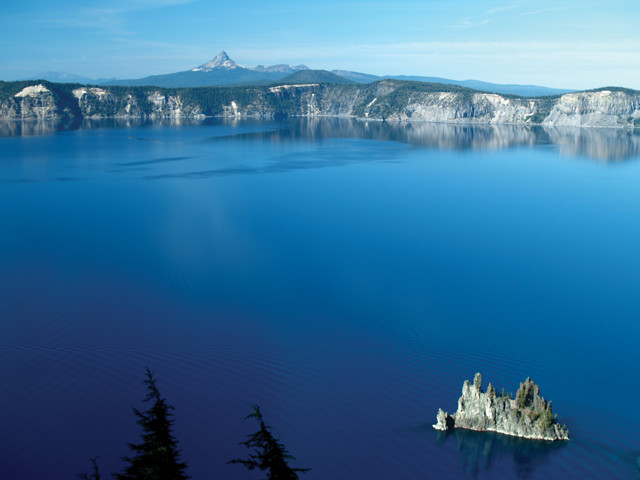
by Mary Caperton Morton Wednesday, November 15, 2017

Oregon's Crater Lake was created when water filled the caldera created by an enormous eruption of Mount Mazama about 7,700 years ago. Clay deposits at the bottom of the lake may concentrate lithium, according to a new study. Credit: Mary Caperton Morton.
Most of the world’s lithium is mined in South America and Australia. New research suggests that the United States may have its own untapped lithium supplies in lake deposits in the calderas left behind by large volcanic eruptions. In the study, published in Nature Communications, researchers detail a new way to detect deposits of the silvery white metal in places such as Crater Lake in southern Oregon.
Lithium is a critical resource for modern electronics, needed to power the rechargeable lithium ion batteries used in everything from cellphones to electric vehicles. “It’s important to identify lithium resources in the U.S. so that our supply does not rely on single companies or countries in a way that makes us subject to economic or political manipulation,” said study co-author Gail Mahood of Stanford University in a statement.
Volcanic settings naturally contain lithium; after an eruption, lithium leaches out of the resulting deposits for thousands of years. Following massive, caldera-forming eruptions, the depression created often fills with water, forming a lake where lithium can naturally accumulate in a type of clay called hectorite.
Mahood and her colleagues analyzed samples from a range of volcanic settings across the West. They found that lithium concentrations were highest in places where certain trace elements, such as rubidium, are found in greater abundance while other trace elements, such as zirconium, are found at lower levels. Detecting lithium directly is difficult, so using trace element concentrations as a proxy may prove efficient for identifying lithium-rich volcanic deposits, the team wrote.
© 2008-2021. All rights reserved. Any copying, redistribution or retransmission of any of the contents of this service without the expressed written permission of the American Geosciences Institute is expressly prohibited. Click here for all copyright requests.